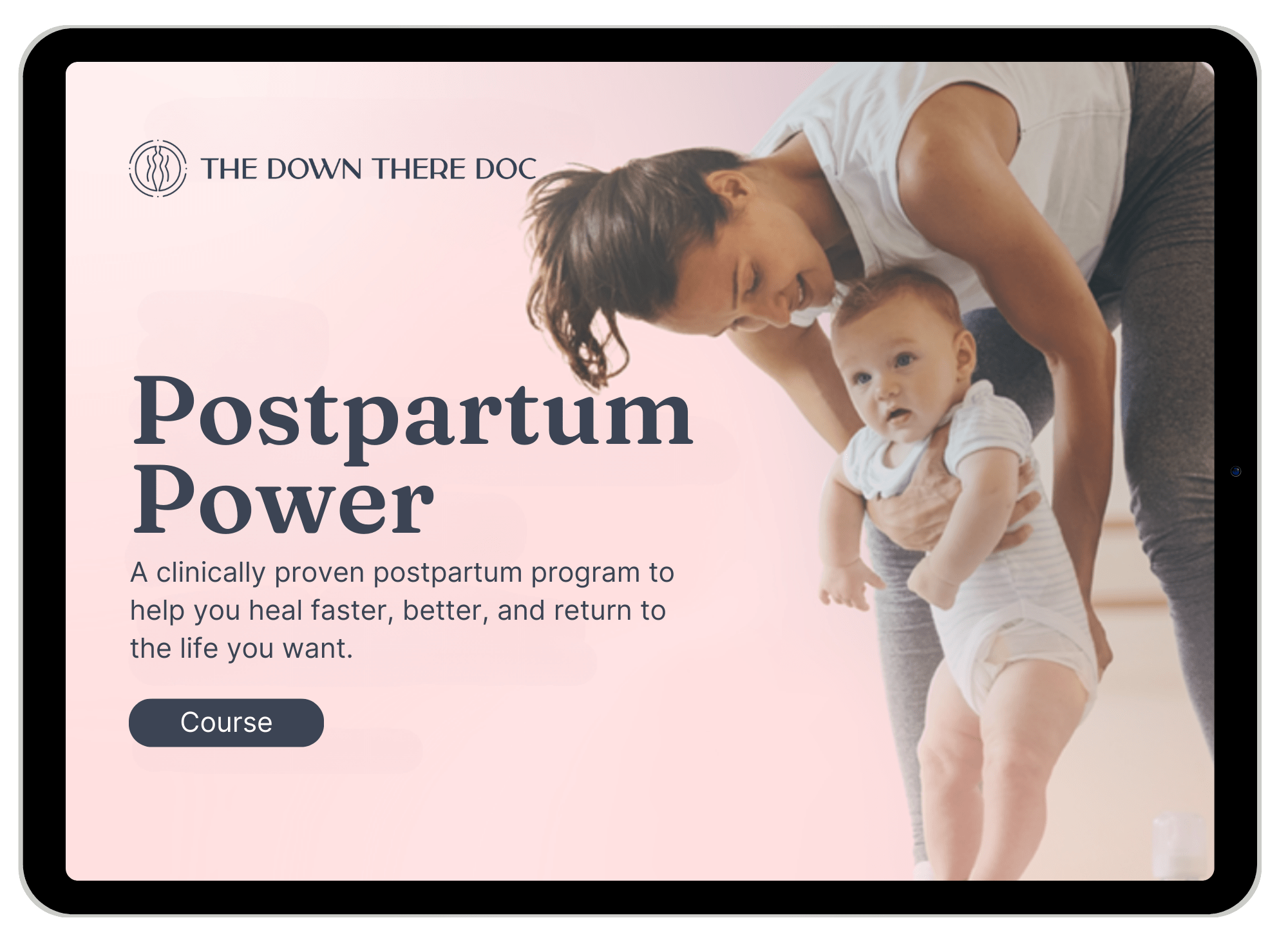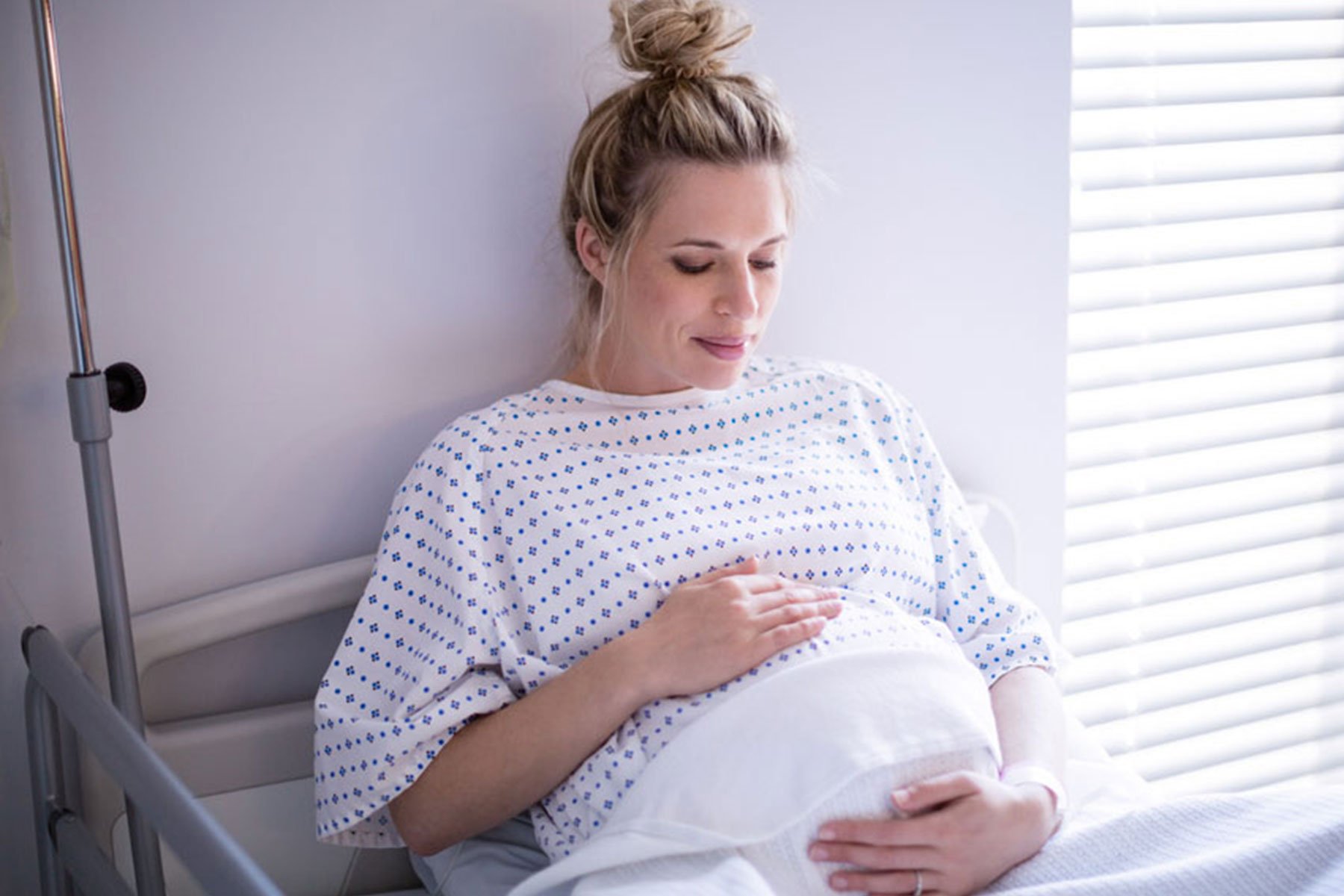Ah, the beloved hospital bag. Everywhere you look, you’ll see articles describing all of the important items you should bring to the hospital. We have fun packing the soft robe, the pretty nursing gown, the special take-the-baby-home outfit, etc. As a specialist for postpartum recovery, I can tell you that it’s also essential to create a post-hospital bag and your vagina will thank you.
I don’t want to diminish the importance of the hospital bag. It’s full of important items for baby, and provides us with our first opportunity to tend to our beautiful new infants. But, as a new mom, you also deserve some special care. Whether you deliver vaginally or via C-section, creating what I refer to as a “vag bag,” can make life a whole lot easier when you get home from the hospital or birthing center (or even if you deliver at home).
So, what should pack? What are these “vag bag” essentials? Should you Google it and search the web for vag bag checklists? Nah, as your friendly postpartum recovery specialist, I’ve got you covered. Here’s a quick list of items you’ll definitely need to have on hand.
See Also

Postpartum Power
1. Ice Packs
I don’t want to mince words. After you’ve essentially pushed a watermelon-sized infant through your vagina, there’s gonna be some swelling and some pain, especially if there was any tearing or repairs needed in your perineum. If you’ve delivered via C-section, ice packs can help with any pelvic discomfort or soreness, which often occurs, especially if you had to push for any length of time before the surgery.
So, before you deliver, invest in some disposable ice packs before Delivery Day, or D-Day, as I like to call it. You can do a search for perineal cold packs or postpartum cold packs. Some are disposable, while others can be reused. Frankly, I recommend the disposable ones, it just makes life easier and you don’t have to clean and refreeze the packs. These can be a bit pricey, but I swear they are worth every penny you pay.
2. The Peri Bottle
Your perineum goes through a lot during the birthing process, and it definitely deserves some special postpartum recovery treatment. I highly recommend FridaBaby’s Fridet® perineal cleaner. The design is far better than what the hospitals provide, and you just fill it up with warm water and squeeze to clean away urine, poop and dried blood rather than using toilet paper in your vaginal area, which can be scratchy and painful.
3. Witch Hazel
If you experience hemorrhoids after delivery, you are not alone. All that pushing can take its toll on your rectal area as well as your vaginal area. Witch hazel is an excellent natural product that can reduce the inflammation, slow down bleeding and relieve some of the pain.
Witch hazel also can be used to reduce swelling in the perineum and vulva areas. I also recommend a product from Earth Mama Organics. After a trip to the bathroom and a quick rinse with the peri bottle, spritz some of their Herbal Perineal Spray down there to ease the pain. They also offer a Skin & Scar Balm for those C-section mamas, and this cream also can be used on stretch marks.
4. Sitz Baths
While a full-on bath is not recommended for several weeks after birth, a sitz bath can be a great way to soothe that perineal area. Basically, you fill a very clean bathtub with a few inches of warm water (not hot!), just enough to submerge your nether regions. You can just soak in the water for a few minutes or add Epsom salts to the water to help with inflammation and pain.
There are also sitz baths kits that just fit over the toilet seat, and this can be a handy option, as well. Earth Mama Organics also produces an organic Herbal Sitz Bath, which are basically pads, infused with organic herbs that can soothe the area.
You steep the pads in boiling water, gently drain any excess water and cool the pad in your refrigerator. Once it’s cool, you can apply it to the perineal area for some amazing relief. Earth Mama Organics also suggests soaking a regular postpartum pad with the remaining herbal liquid and freezing it to make an extra soothing ice pack.
5. Pads, Pads & More Pads
Sure, your Aunt Flo probably won’t be making an appearance for several months, but there’s plenty of blood down there and not just for the first few days after birth. It’s not uncommon for women to bleed for up to six weeks after delivery.
The lochia, which is a mix of blood and mucous, is what you’ll experience for the first 8 to 10 days after giving birth, either vaginally or via C-section. This can be quite heavy, so you need a comfortable pad that is up to the challenge. After all, you can’t use tampons for the first six weeks after giving birth and regular period pads aren’t going to cut it.
Overnight pads are essential, but they aren’t the only option. Many women love using incontinence pads, as they can soak up a lot and the extra-long ones provide a ton of coverage. Using mesh panties or disposable incontinence panties is another great option, especially during the first week or two when the bleeding is particularly heavy.
6. Compression Garments
In a fictional world, our bodies snap right back into place after birth, but this is the real world and your abdominal area may be swollen or just feel weak and squishy. Frankly, it can be a bit uncomfortable walking around and handling baby care, caring for other children, handling the laundry, cooking meals and the 473 other tasks we moms tackle on a daily basis.
Wearing compression garments can provide your weakened muscles with the support that they need. Of course, at the postpartum stage, you really just want some gentle support, as those lady bits are still sore and healing. SRC Health’s Recovery Shorts were designed specifically for new mommies and help to reduce swelling, provide muscle support and even ease the pain of a C-section and perineal pain. SRC Health also makes Recovery Leggings and some handy nursing clothes.
Another great option I recommend is available through BaoBei Maternity. This company offers fantastic postpartum leggings as well as pregnancy belly support bands, postpartum bloomers (basically little shorts that provide some wonderful support), comfortable nursing bras and much more.
Postpartum Recovery Services
As a pelvic floor physical therapist and a mommy, I know just how difficult it can be to find time for self-care, but using these aforementioned products truly can speed up healing and ease discomfort, allowing you to better enjoy your first days with your new bundle of joy.
If you find that it’s been several weeks post-delivery and you are still experiencing C-section scar pain or perineal pain, give us a call. We can help with these issues as well as many others associated with postpartum recovery, including incontinence, vaginal pain, painful sex or muscle weakness.
If you are having any pelvic issues, don’t hesitate to give us a call or schedule an appointment. And, if you’re pregnant, we can help get you ready for labor and delivery, and make your recovery as easy as possible.









